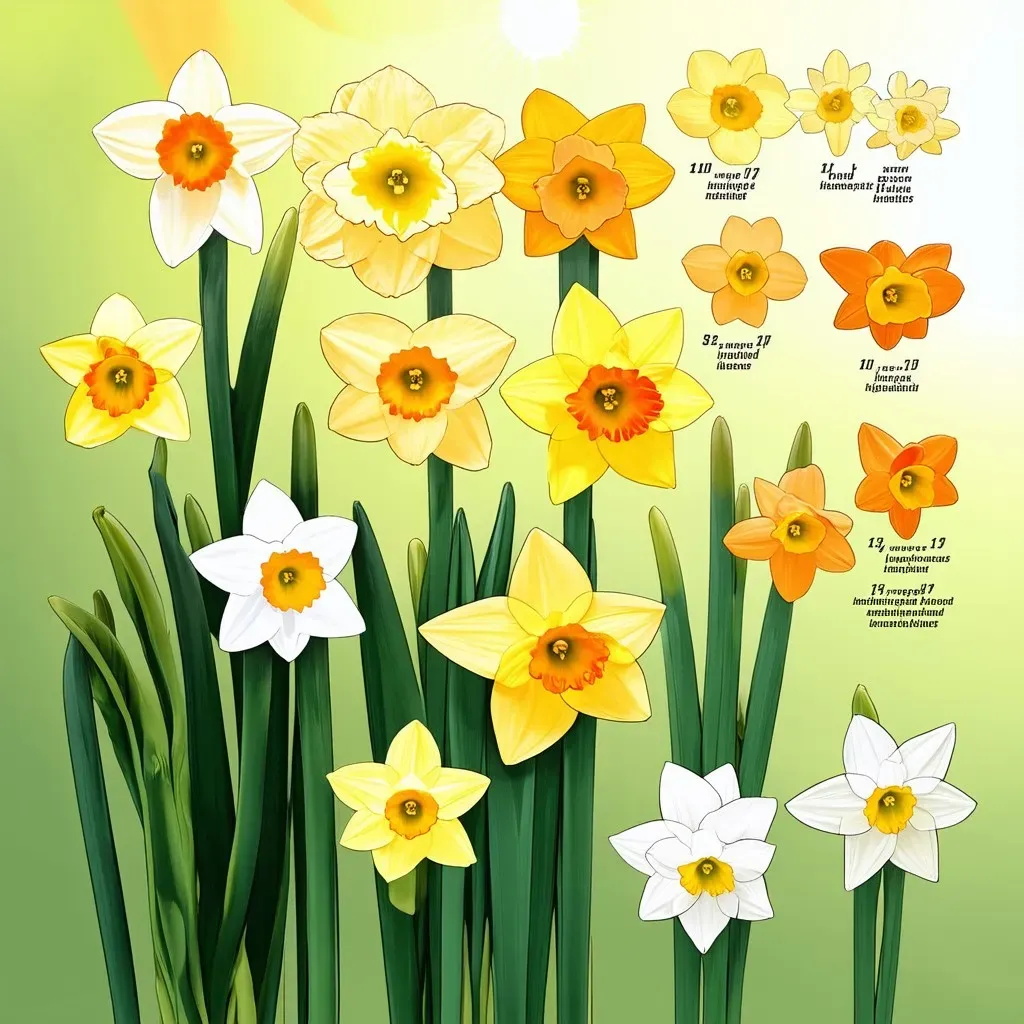The Daffodil Bloom Chart is an essential tool for gardeners looking to schedule their planting and enjoy a vibrant spring garden filled with these beautiful flowers. Daffodils, also known as Narcissus, are among the first blooms to signal the arrival of spring, providing a cheerful display of yellow and white flowers. From early to late spring, knowing the bloom times of various daffodil varieties will help you maximize your garden’s potential and ensure a continuous display of these delightful flowers.
Understanding Daffodil Bloom Times
Daffodils are categorized into three main bloom time groups: early, mid-season, and late bloomers. Different varieties will bloom at different times, which is key for planning your garden to have a succession of flowers. Let’s dive into the general timeline for when you can expect each group to bloom:
| Bloom Time Group | Estimated Bloom Period | Characteristics |
|---|---|---|
| Early | Mid to Late March | Bright yellow, white flowers |
| Mid-Season | Early to Mid April | Varieties in various colors and forms |
| Late | Late April to Early May | Larger blooms, often very fragrant |
This chart should serve as a helpful reference when selecting daffodil bulbs for your garden setup.
Daffodil Varieties and Their Bloom Times
Here’s a detailed listing of popular daffodil varieties by their respective bloom times:
Early Blooming Daffodils
-
Narcissus ‘February Gold’
- Bloom Time: Early March
- Color: Golden Yellow
- Features: Stoic and resilient against cold snaps.
-
Narcissus ‘Tete-a-Tete’
- Bloom Time: Mid-March
- Color: Small and cheerful yellow blooms
- Features: Dwarf variety perfect for pots.
-
Narcissus ‘Jetfire’
- Bloom Time: Early to mid-March
- Color: Yellow with an orange trumpet
- Features: Unique color combination, great for borders.
Mid-Season Blooming Daffodils
-
Narcissus ‘King Alfred’
- Bloom Time: Mid to Late April
- Color: Large, pure yellow flowers
- Features: Iconic for its prominence in gardens.
-
Narcissus ‘Ice Follies’
- Bloom Time: Mid to Late April
- Color: Creamy white with a yellow center
- Features: Helps create a beautiful blend with Other flowers.
-
Narcissus ‘Golden Harvest’
- Bloom Time: Late April
- Color: Bright yellow
- Features: Stout stem, resistant to wind.
Late Blooming Daffodils
-
Narcissus ‘Pueblo’
- Bloom Time: Late April to Early May
- Color: Orange and yellow
- Features: Unique shape, excellent for cut flowers.
-
Narcissus ‘Salome’
- Bloom Time: Early May
- Color: White with a peachy-yellow trumpet
- Features: Eloquent form and scent.
-
Narcissus ‘Dick Wilden’
- Bloom Time: Early May
- Color: White with a pronounced orange trumpet
- Features: Strong fragrance, very attractive.

Tips for Extending Your Daffodil Bloom Season
In case you want to enjoy daffodils beyond their normal bloom times, here are some key tips to consider:
-
Choose Mixed Varieties: Plant a variety of daffodil types that bloom at staggered times to extend the flowering season from early spring to late spring.
-
Plant in Layers: If space permits, consider planting bulbs in layers. The deeper bulbs can last for weeks, while those on the surface bloom earlier.
-
Companion Planting: Pair your daffodils with other spring-blooming plants. Tulips and hyacinths can complement the beauty of daffodils.
Bloom Chart Reference Links
For further information and in-depth resources, you can check the following links:
Frequently Asked Questions (FAQ)
What factors affect the bloom time of Daffodils?
Bloom time can depend on several factors, including local climate, soil temperature, and variations in sunlight exposure. Colder regions may have delayed bloom times compared to warmer areas.
Can I force Daffodils to bloom early?
To achieve earlier blooms, you can try forcing daffodils by chilling the bulbs in the fridge for a few weeks before planting them in pots and keeping them in a warm environment.
How do I care for Daffodils post-bloom?
After blooming, it’s essential to let the foliage die back naturally. This process allows the bulbs to store energy for the next bloom season. Remove spent flowers but keep the leaves intact until yellowed.
Are Daffodils Deer Resistant?
Yes, daffodils are typically deer resistant and tend to deter rodents and rabbits due to their toxic alkaloids.

By employing the knowledge provided through the Daffodil Bloom Chart and accompanying guidance, you can create a stunning garden that beckons spring’s arrival every year. Happy planting!


